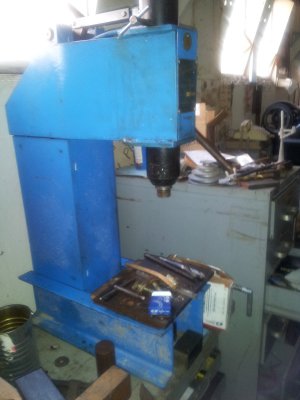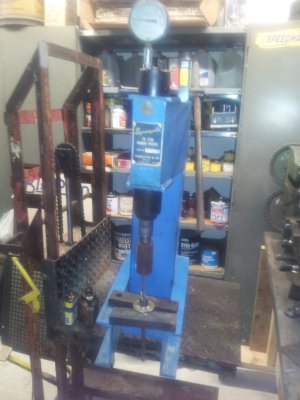several "poor boy " alternatives from over 70 yrs of working w/ tools ...
i have broached square holes in mild steel using squared off lathe bits w/ no relief /clearance...hole is drillled a tad larger , maybe 1/32 o/size , depending , & chamfered lightly to start the bit ...which is bashed thru w/ a 3# hammer ...eye portection w/ hard steel on hard steel & straight on hitting ( prevent chip )....straight thru w/ out removing ...you cannot be timid...if you are , back it out ,clear & go again .....largest i have done this way is .455 ( ground a 1/2 in bit on surface grinder ) for a knuckle buster chuck wrench ( external square head adjuster screws ).........it has been called "bash broaching " by IIRC rick sparber
gears & pulleys on old tyme farm equipment were round key pinned ....shaft inserted & a hole drilled at the junction of shaft & gear/pulley ..a pin , usually a 16 penny or 20 penny jail was driven in & ground off ...drilled hole will want to run off a ta d in the softer metal so it shud be started a little 'off"...this is also useful when you have drive fitted a bushing to make sure it doesent spin , if you think the fit was a tad light ..like in fitting a bushing to a face /back plate to cut s new thread....
multiple hack saw blades , the inner ones thinned if necessary for size can cut an internal key way ..finish w/ file been there....
cape chisel & file been there
if you have a broach & no press , a lead hammer will drive th e broach ...it is h-- on the hammer , but so far have not chipped /broken a broach ,,,,again we are still talking mild steel
for larger square holes , a shaper works great ....make a boring bar to replace the tool post ..bolt it to the clapper & cut UP w/ clapper locked ...( slack is taken out )...this is straight thru & does not have the cantlever of a tool holder hung down from the tool post ..."ride' the ram & put on 2-3 thou each time it retracts ...using doc's leonardo tool holder , in shaper board tool holder sketches allows near double th e width & d.o. cut ...
if you have a mill ......center punch & scribe a circle the diameter of the square needed......drill out the corners w/ a small drill3/32 , 1/16 whatever needed ........NOW drill out the large center hole ..now use the smallest end mill diameter to square out the hole .( CAREFULLY >LITE CUTS )...i
.made handles for 7 in van norman vise & 6 in palmgren milling vise last winter w/ this methood ...thanks to an atlas crftsmn board poster
FWIW ...a 3 T greenard arbor press was not enuf to broach a keyway in a 2 in long flat belt pulley for an antique shaper ...IIRC ,,it was a 3/32 ..
these are my experiences ,,,when they are what i have only read or heard , i so state
best wishes
docn8as



